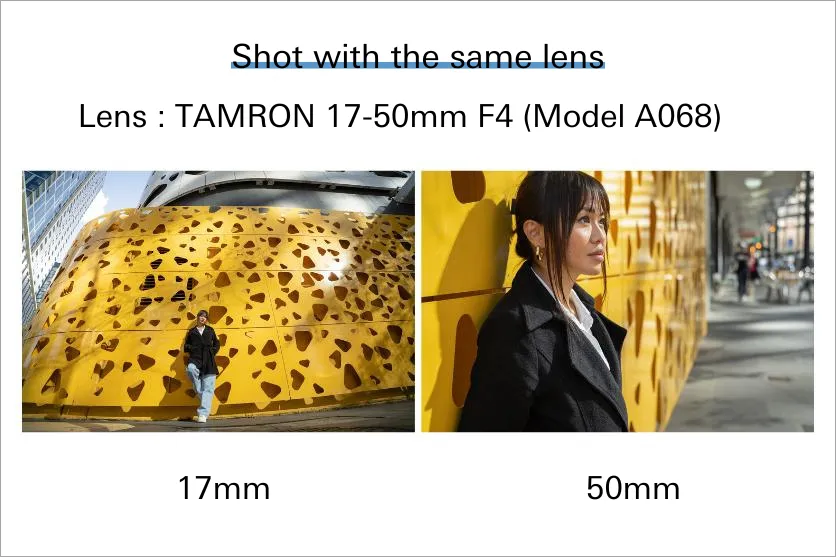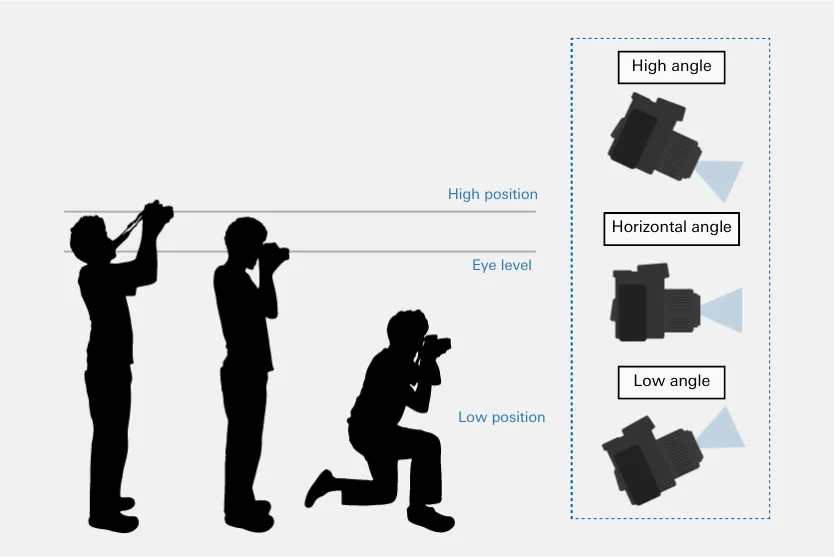October 18, 2024
Easy-to-understand explanations of the basics of composition and angles for taking good photographs! [Must-see for beginners]
Easy-to-understand explanations of the basics of composition and angles for taking good photographs! [Must-see for beginners]
![Easy-to-understand explanations of the basics of composition and angles for taking good photographs! [Must-see for beginners] Easy-to-understand explanations of the basics of composition and angles for taking good photographs! [Must-see for beginners]](/global/consumer/article_file/file/article-basics-of-composition_01.webp)
![Easy-to-understand explanations of the basics of composition and angles for taking good photographs! [Must-see for beginners] Easy-to-understand explanations of the basics of composition and angles for taking good photographs! [Must-see for beginners]](/global/consumer/article_file/file/article-basics-of-composition_01.webp)
Some people who have just started using interchangeable-lens cameras may have the problem of “not being able to take pictures well as I imagined. We recommend that the first thing you should be aware to take beautiful pictures is to try to compose your pictures. In this article, we will introduce an overview of composition, key elements, and examples of typical compositions.
What is composition? The key elements
Composition is the key to good photography. So what exactly is composition? Composition is a way of thinking about how to arrange and organize subjects and elements in a picture.
Composition is used not only in photography, but also in painting, graphic design, video, cartoons, and many other types of works. This method of composition can create balance, rhythm, and harmony in a work of art. It is no exaggeration to say that composition greatly influences the overall impression and message of a work.
To make good use of composition, we will first introduce the key elements of composition. Here, we will discuss the five elements of framing, leading lines, layering, vertical and horizontal format, and the amount of information in the background.
Points 1: Framing
“Framing” is a word that describes how to capture the scene you see in front of you as a photograph.
To put the spotlight on the main subject, it is important not only to “add” but also to “subtract” to remove unnecessary elements. For example, simplifying the background and adding blur to the background will naturally focus attention on the central subject.
On the other hand, effectively including foreground and background elements can convey the situation in which the subject is placed and emphasize the contrast with the surroundings.
After deciding on the main subject of the photo, consider framing while keeping in mind “how can I make the main subject stand out?
Points 2: Vertical and horizontal format
There are two general types of photo formats: vertical and horizontal. Vertical photos tend to move the eye from top to bottom, giving the impression of emphasizing size, shape, and lines, not to mention capturing the entire image of a long, vertical subject. For example, it is often chosen for portraits, architecture, and lifestyle photography.
On the other hand, horizontal photos tend to move the eye from left to right. This creates an impression of scale when photographing landscapes and nature, and expresses dynamism when photographing sports and other subjects that move from side to side. It is best to choose the most appropriate format, keeping in mind the movement of the human eye.
Point 3: Leading lines in composition
Leading lines are lines that guide the eye. There are a variety of leading lines, including horizontal, vertical, diagonal, and curved lines. If you make good use of these lines, you can subconsciously lead people's eyes to the subject area.
For example, in landscape photography, vertical, horizontal, and diagonal placement of lines created by nature, such as mountain ranges and rivers, can create depth and a three-dimensional effect. In addition, placing the subject and subtopics at the intersections in a three-part composition, for example, will create a flowing, well-balanced photograph.
Points 4: Layering (foreground, midground, and background)
Layering refers to the superposition of foreground, midground, and background. The foreground is the foremost object in the foreground and the background is the farthest object in the background. The midground is what lies between the foreground and the background. Layering the foreground, middle ground, and background creates depth and dynamism in a photo.
In portraits, for example, the inclusion of a foreground blur can give the impression of looking into the subject and create an emotional atmosphere. It is possible to create a crisp, attention-grabbing photo without boring the viewer.
Point 5: Amount of information in the background of the composition
The amount of information in the background is also an important element of composition. If the amount of information in the background is small, the impression of the subject is enhanced. On the other hand, if the background contains more information, the relationship between the subject and the surrounding situation is emphasized.
For example, a simple wall surface for the background in a portrait or the creation of a large blur will reduce the amount of background information. The viewer will then inevitably focus on the subject. On the other hand, capturing a solid background of natural scenery or a cityscape will strengthen the meaning and story of the subject's presence in the scene and create drama. Use different amounts of bokeh and different angles of view (wide-angle lens or telephoto lens, etc.) to crop the background in different ways.
Typical photo compositions you should know
There are some typical compositions often used in photography. In addition to simply fitting the subject according to the composition, you can make more effective use of composition by being aware of the leading lines and layering introduced here so far.
(1) Balanced “Three-Section Composition”
Triptych composition is a composition in which the image is divided vertically and horizontally into 3 x 3 sections, and the central subject and supporting material are placed at each intersection. This composition creates the appropriate amount of blank space and crispness in the image, resulting in a well-balanced photograph.
The three-division composition is one of the most versatile compositions that can be used in a variety of photographic situations, including portraits, landscapes, and wildlife photography, so it is best to master it first.
(2) “Four-Section Composition,” ideal for landscape photography
The quadrant composition is a composition in which the image is divided vertically and horizontally into 4 x 4 sections, with the key subject placed at each intersection, and the foreground and scene borders placed at each intersection. Like the triangular composition, it is one of the compositions in which it is easy to obtain a good balance of margins and top and bottom.
It is a composition similar to the aforementioned three-division composition, but it can be used to create a sense of stability when there is little density in relation to the sense of scale, such as in a vast landscape, or when you want to emphasize a sense of distance and plenty.
(3) “Split composition” - simple and powerful
A split composition is a composition in which the subject is placed in two equal sections, either vertically or horizontally. It is often used in landscape photography of seascapes, mountains, rivers, and cityscapes. By focusing on the borderline, such as a horizontal or vertical line, a simple yet powerful impression is created.
It can also be used to emphasize the contrast between the inside and outside of a boundary, such as the contrast between indoors and outdoors.
(4) “Hinomaru composition” placing the border in the center
Hinomaru composition is a composition in which the central subject is placed in the center of the picture, like the Japanese national flag. It is often used when you want to capture a single subject, such as a portrait, animals, plants, insects, or portraits. When using this composition, a simple background will make the subject stand out more.
(5) “Diagonal Composition” to create depth
Diagonal composition is a composition in which the subject is placed on the diagonal of the frame. For example, placing the lines of buildings, bridges, roads, and other structures on the diagonal creates depth and dynamism. Also, arranging objects on the diagonal in a table photo, for example, can create a rhythm without being flat.
(6) “Triangular composition” gives a sense of stability
Triangular composition is a composition in which the subject is placed on the vertices or sides of a triangle. It is also used in landscapes, portraits, and other types of photography. This composition is recommended when you want to create a sense of balance and stability. It is also suitable for expressing the majesty of natural landscapes and for photographing large subjects such as mountains or buildings in a balanced manner.
(7) “Curved Composition” utilizing curves
Curved line composition is a composition that takes advantage of the curves of the subject or places the point of interest on the curves. In addition to photographing curved structures and roads, it can also be used to express the dynamic and rhythm of mountain ranges and coastlines.
(8) Other compositions
There are many other compositions that can create the impression and atmosphere of a photograph. If you find a composition that interests you, be aware of it and try to use it.
Tunnel composition
Tunnel composition is a composition in which the subject is placed in the center and surrounded by other elements, like a tunnel. The elements surrounding the subject serve as leading lines and reinforce the impression of the subject, giving the viewer the feeling of peering into the scene.
Symmetry Composition
Symmetrical composition is a composition in which the subjects are arranged so that they are symmetrical either vertically or horizontally. It gives the impression of a mirror, and the geometric beauty of the composition is emphasized.
Contrast composition
Contrast composition is a composition that contrasts subjects using size, color, light and dark, and shape. By placing contrasting objects on the same screen, such as a large object and a small object, or a bright light and a dark light, the main subject can be enhanced.
Fibonacci Spiral Composition
Fibonacci spiral composition is a composition in which the subjects are arranged in the form of a spiral in the golden ratio. Leading lines are created toward the center of the spiral, resulting in a well-balanced photograph.
To take advantage of composition! Use your footwork to work out the distance between you and your subject.
In framing and composing a photograph, the distance and positioning of the subject is also an important point. Find the best composition by changing the distance between you and the subject, the position of the camera, and the angle. Here we will introduce three key points: “angle,” “position,” and “leaning in.
(1) Angle (Camera angle)
Angle refers to the angle at which the camera is pointed. There are three main types of angles: low angle, high angle, and horizontal angle.
For example, a low angle with the camera pointing up can create a sense of openness and dynamism, while a high angle with the camera pointing down can create a sense of stability, protection, and ownership. In addition, horizontal angles, where the camera is level, will tend to create a balanced and calm impression.
(2) Position (where you hold the camera)

Position refers to the position in which the camera is held. There are three main categories: high position, low position, and eye level. For example, a high camera position creates the sensation of looking down on the subject. On the other hand, shooting from a low position, with the camera held low, creates a sense of space, power, and dignity. Eye level, where the camera is held at the subject's eye level, can give a sense of realism.
(3) Change the look with close-ups and pull-ups
“Close-up” means to get close to the subject. Since the subject appears larger, details and textures are emphasized, and a sense of realism and intimacy can be expressed. On the other hand, a pull-up (wide shot) is a shot taken at a distance from the subject. By taking distance from the subject, you can express a sense of scale and spatial expanse of the entire scene.
TAMRON lenses recommended for beginners
To take photographs with the composition as you have imagined, you need to adjust the appropriate focal length and f-stop. Here we introduce TAMRON lenses recommended for beginners.
-
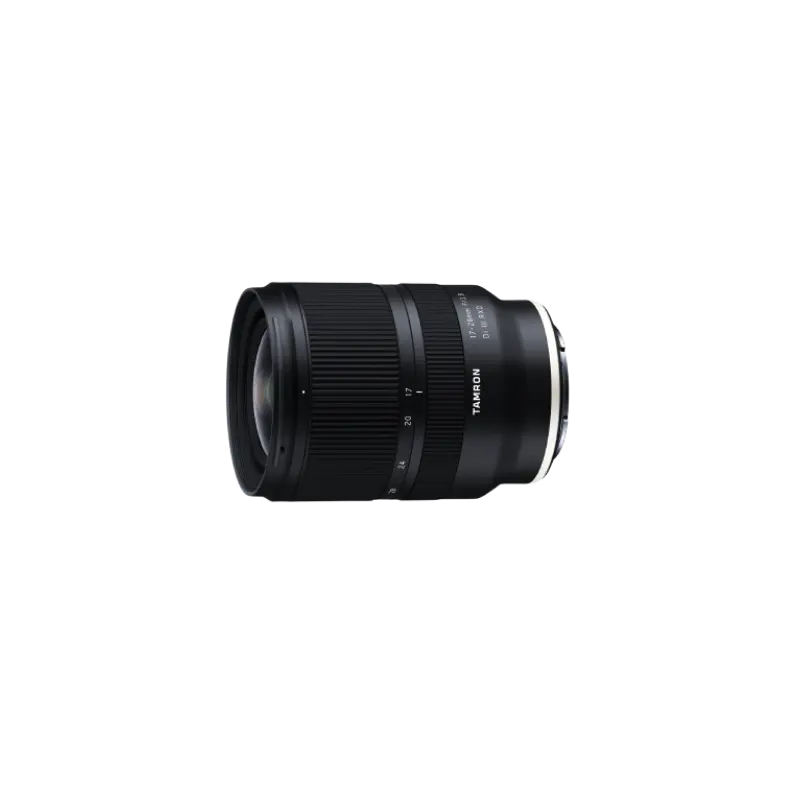
-
17-28mm F/2.8 Di III RXD a046(Model )
The 17-28mm F/2.8 Di III RXD (Model A046) achieves a filter diameter of ø67mm, which is surprising for a large aperture ultra wide-angle zoom lens for full-frame cameras. It’s small and light weight with a good camera balance. It's a dedicated lens for mirrorless interchangeable -lens cameras that can be carried easily and can be used in various situations.
-
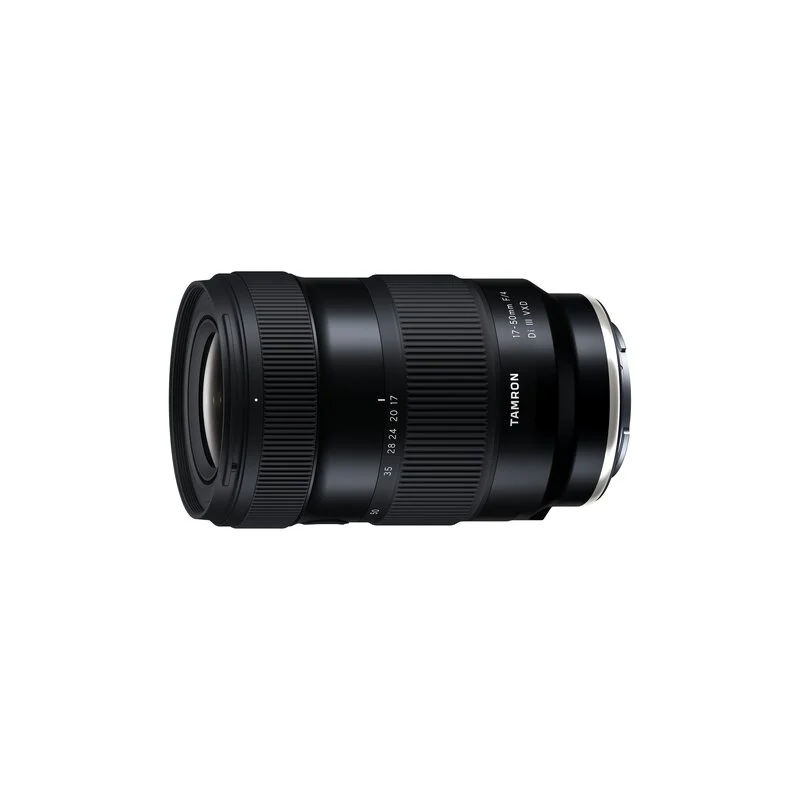
-
17-50mm F/4 Di III VXD a068(Model )
The 17-50mm F/4 Di III VXD (Model A068)It's the world’s first lens covering from ultra wide-angle 17mm to the standard 50mm focal length. The highly-compact TAMRON 17-50mm F/4 Di III VXD (model a068) for Sony E-mount full-frame mirrorless cameras offers maximum versatility for still and video creators. From landscapes to living rooms, this lens captures all that you see.
-

-
11-20mm F/2.8 Di III-A RXD b060(Model )
The 11-20mm F/2.8 Di III-A RXD (Model B060) is the world's first compact, lightweight F2.8 ultra wide-angle zoom lens for Sony E-mount APS-C mirrorless cameras. Can be a great choice for video shooting.
-

-
20-40mm F/2.8 Di III VXD a062(Model )
The 20-40mm F/2.8 Di III VXD (Model A062) is a new large-aperture standard zoom lens that thoroughly pursues portability. While covering the range from the ultra-wide angle of 20mm to the standard range of 40mm, it is the smallest and lightest in its class. It also offers high image quality throughout the entire zoom range, making it useful not only for still image shooting but also for video recording such as vlogging. The VXD, which is quiet and agile, achieves high-speed, high-precision autofocusing. It is a new, unprecedented large-aperture standard zoom lens that allows users to easily enjoy taking out and shooting both still and video.
-

-
28-75mm F/2.8 Di III VXD G2 a063(Model )
28-75mm F/2.8 Di III VXD G2 (Model A063) is the second-generation fast-aperture standard zoom lens for Sony and Nikon full-frame mirrorless cameras, offering significantly improved optical and autofocus performance and new function customization.
-

-
17-70mm F/2.8 Di III-A VC RXD b070(Model )
The 17-70mm F/2.8 Di III-A VC RXD (Model B070) is a large-aperture standard zoom lens for APS-C format mirrorless cameras. With a focal length range of 17mm to 70mm (a full-frame equivalent of 25.5-105mm) for daily use, this achieves a 4.1x zoom. The optical design ensures high resolution and high contrast not just in the center of the image but also in corners and at the edges. The quiet AF drive motor and the VC image stabilization mechanism facilitate hand-held shooting. In addition, by counteracting focus breathing, the 17-70mm F2.8 empowers users' expression of their creative intentions to the fullest degree. This highly practical lens allows you to easily enjoy the high image quality of a large F2.8 aperture for both still and video shooting.
-
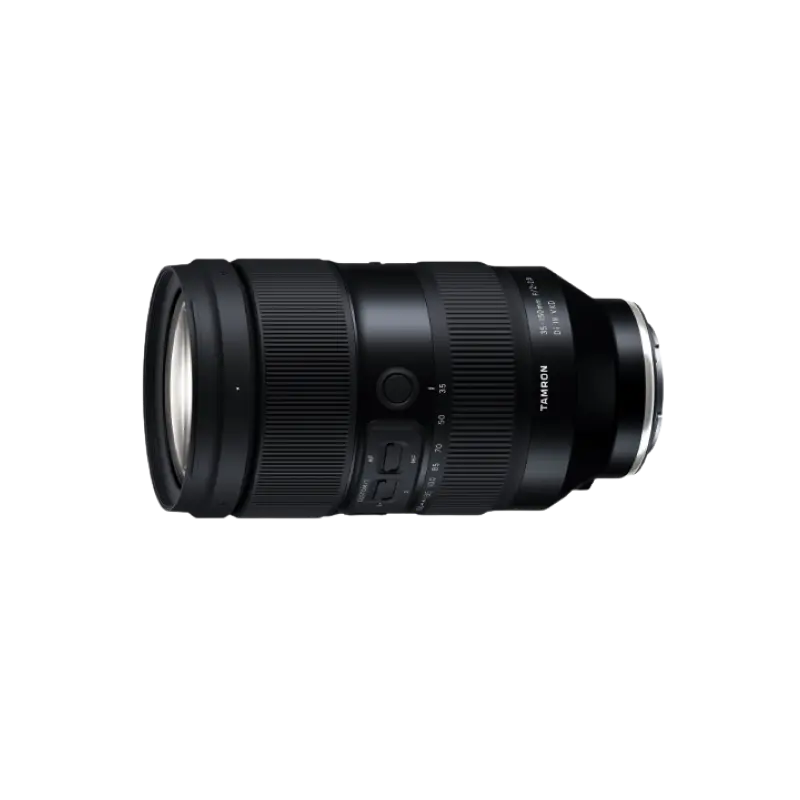
-
35-150mm F/2-2.8 Di III VXD a058(Model )
The 35-150mm F/2-2.8 Di III VXD (Model A058) is a high resolution travel zoom lens that covers everything from the 35mm wide angle to the 150mm telephoto focal length, the first zoom lens achieving an aperture of F2 at the wide angle end. It has a groundbreaking fast-aperture and utilizes the linear motor focus mechanism VXD (Voice-coil eXtreme-torque Drive), thereby achieving high speed, high precision autofocusing. The innovative lens design enabled us to greatly improve the lens's grip and functionality. The software, developed in-house, enables to easily customize functions and to update firmware.
-
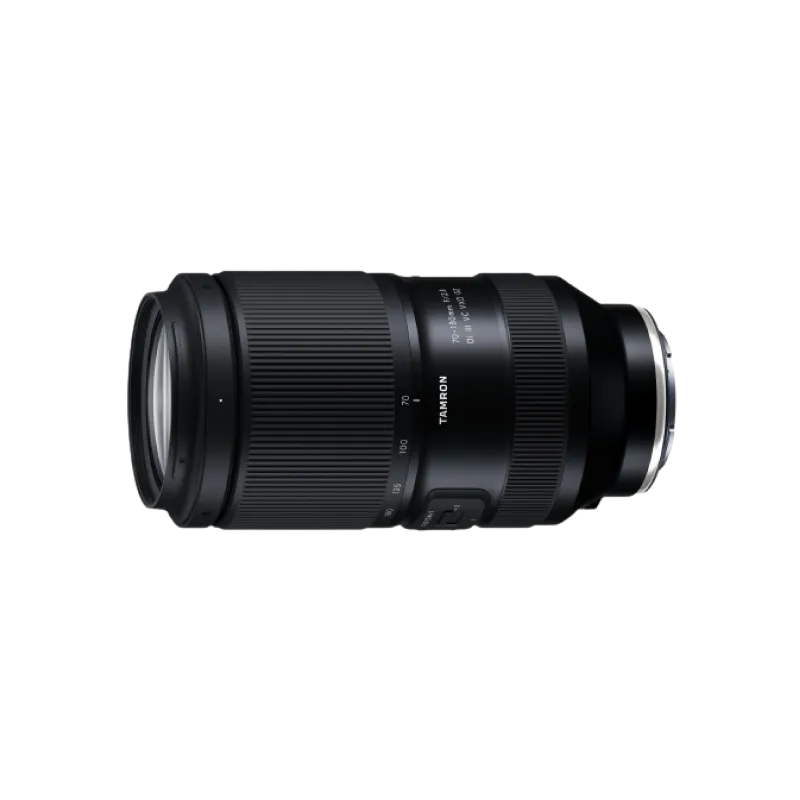
-
70-180mm F/2.8 Di III VC VXD G2 a065(Model )
70-180mm F/2.8 Di III VC VXD G2 (Model A065) has evolved to G2 level.This is the world’s smallest and lightest, fast-aperture telephoto zoom lens for Sony E-mount with astounding portability and superb image quality.
-

-
70-300mm F/4.5-6.3 Di III RXD a047(Model )
The 70-300mm F/4.5-6.3 Di III RXD (Model A047) for full-frame mirrorless cameras is a telephoto zoom lens designed and created so photographers of all skill levels can enjoy high quality images comfortably. The 70-300mm F4.5-6.3 covers a broad telephoto zoom range yet is the small and lightest weight. With special emphasis on resolving power, TAMRON has deployed special lens elements appropriately arranged to correct chromatic aberration, generally very strong in a telephoto lens, as well as other aberrations. Users can enjoy high-resolution images combined with stunning bokeh qualities that are achievable only with a telephoto lens. The lens also incorporates the RXD, a high-speed precision AF drive system that is remarkably quiet. The 70-300mm F4.5-6.3 is a versatile lens for photographing landscapes, sports and other action, pets, wildlife, and more. The lens also demonstrates its potential for portrait shooting, casual snapshots, and scenarios that require you to be mobile and shoot handheld, like sporting events.
-

-
28-200mm F/2.8-5.6 Di III RXD a071(Model )
Tamron has distilled all the technical capabilities and know-how amassed over the last 28 years in its development of all-in-one zoom lenses into the creation of this 28-200mm F/2.8-5.6 Di III RXD (Model A071), designed exclusively. The lens has a large maximum aperture of F2.8 at 28mm wide end, which represents a world’s first* for all-in-one zoom lenses, and delivers high-level performance across the entire zoom range, from the 28mm wide-angle end to 200mm telephoto.
-
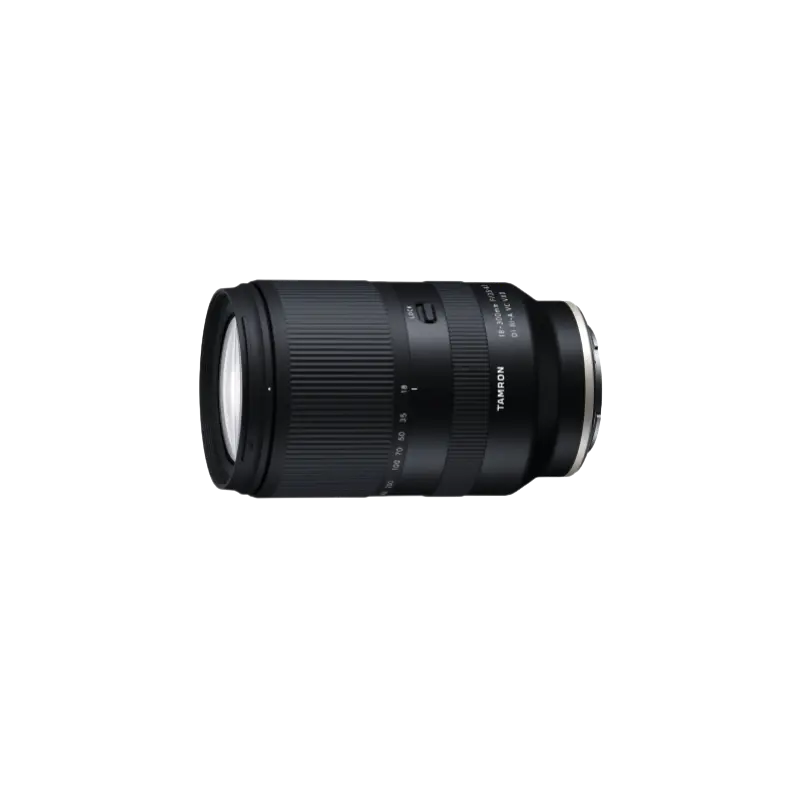
-
18-300mm F/3.5-6.3 Di III-A VC VXD b061(Model )
The 18-300mm F/3.5-6.3 Di III-A VC VXD (Model B061) achieves 16.6x zoom and is equipped with the VXD for a quiet and agile AF drive. The optical construction includes several special lens elements, specifically four LD (Low Dispersion) and three hybrid aspherical lens elements. These elements help to produce clear, sharp images from the center to the corners and deliver top-level image quality in its class. It is enabled close-up shooting and is equipped with the VC system. The 18-300mm F/3.5-6.3 makes photography more fun because you can use it in an unlimited number of situations. It’s so versatile, it will inspire you to push your creativity further and further.
Composition is an important technique that affects the impression of a photograph. You should consider composition while keeping in mind factors such as framing, leading lines, layering, and the amount of information in the background. Finding the best composition to create a better work of art also requires ingenuity in angles, positions, and leaning in and out. Use the typical compositions introduced in this article as a guide as you repeatedly release the shutter.


